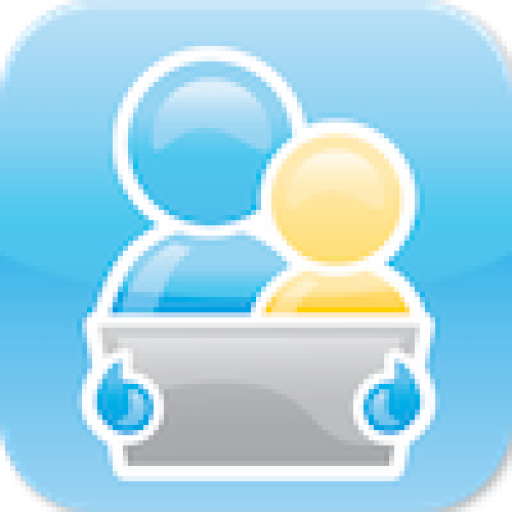This blog post has been over a year in the making. It started as a result of the work I do with multiple schools and teaching literacy in AAC. Assessment is an important component of our literacy teaching – and writing assessment, as I have said many times, is a really important piece to help us to know what to teach next.
For several years I have been using the Developmental Writing Scale (Sturm, Cali, Nelson, & Staskowski, 2012) as a tool to help us assess writing samples an inform our teaching. I have also been using the Hanser’s (2009) Informal Rating Scale for Emergent Writing, and, being in Australia, I have been using the descriptors from Australian Curriculum to help us determine what the next level might be when the assessment scales haven’t been able to give me this information.
Each of those tools, plus the many writing trainings, programs, and books that I have engaged with, have greatly informed my writing practice – and helped me to teach others. But as we became better at teaching writing, it became more apparent that we needed a more universal tool for our writing assessment. Moreover, we needed a tool that enabled us to track the small changes that many of our students make.
And so, about 14 months ago, after completing a writing moderation at The Grove Education Centre, the educators at the school and myself had our first session of attempting to create our ideal scale. I had already created a draft as a basis for the session, and we had over 200 writing samples ready to be discussed, organised and re-organised! We talked about many factors in writing that we wanted to include. For example, we agreed that student engagement is an important factor for writers at the earliest levels, that needed to be present in the scale. Most students demonstrate increasing engagement with writing as they begin to view themselves as a writer – and for our ideal writing scale it was important it be included. Of course, this wasn’t our only point of discussion – but after a couple of hours of brainstorming and moving writing samples all around the school hall as we discussed the flow of the scale, the next draft was born!
The educators at Bullimbal School followed a similar process to the one we had used at The Grove – which resulted in a number of changes and additions. Then, the amazingly generous Karen Erickson very kindly read it, made suggestions and improved the scale – and Helen Tainsh did the same. By November last year we had a version that I was confident was almost ready to share!
Unfortunately a personal tragedy delayed things, and it took me a few months to get back on track. In the last few months, however, other schools have used the new continuum and further informed the development. Jane Maidment from Salisbury Park Primary School was a critical friend in many ways – and the students from her school contributed more samples; Red Hill Special School trialled the continuum, and really helped my thinking around students using partner assisted scanning – and their deputy principal, Steve, suggested the use of the word continuum in the title; Wangee Park School also trialled it, and helped me to understand how I needed to explain some of the descriptors more clearly – and Coomera State Special School were the most recent to trial the continuum. They helped me to make a couple of final tweaks and get it ready to share!
And so, without further ado, I present the Writing with All Tools Continuum. The continuum:
- Is a 34 point ordinal scale with qualitative writing levels from early emergent to Australian Curriculum Year 4;
- Is designed to assess writing samples from developing writers who are using any writing tool, including handwriting, flip charts, or keyboards;
- Aims to assist you to monitor the small changes that students might make over time;
- Has a strong emphasis on the skills each individual needs to develop as they move to the next stage of writing, including functions of print, language, and form.
You can download a copy of the continuum below:
The continuum document contains:
- The continuum with examples
- Guidelines for collecting writing samples for assessment and moderation
- Assessment and moderation guidelines
- Further information on writing tools
- Information about attributing meaning and co-constructing language
- Extra information around some of the terms used in the continuum
- Acknowledgements
- References
In addition to the continuum, I have created some documents to help support you in using it.
The first document is a booklet of writing samples, showing each of the 34 levels. Again, you can access this by click below:
The second document is one I call “Teaching to the next level” – providing information and suggestions around how to help each writer move to the next level on the continuum.
I look forward to hearing from people using the continuum – and hope that it helps inform your writing assessment and teaching. In the next couple of months I will be offering some free webinars around the Writing with All Tools Continuum as well.
References:
Hanser, G. (2009). Informal Rating Scale for Emergent Writing. Center for Literacy & Disability Studies, University of North Carolina at Chapel Hill.
Sturm, J., Cali, K., Nelson, N.W., & Staskowski, M. (2012). The Developmental Writing Scale: A new progress monitoring tool for beginning writers. Topics in Language Disorders, 32(4), 297 – 318. https://doi.org/10.1097/TLD.0b013e318272159e


carolyn italiano
Michelle Britt-Thompson
jane
Helen Brunner
Lilly
jane
khawk92
jane
Ina
jane